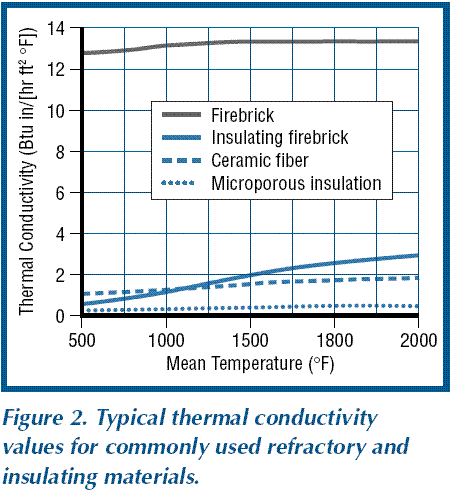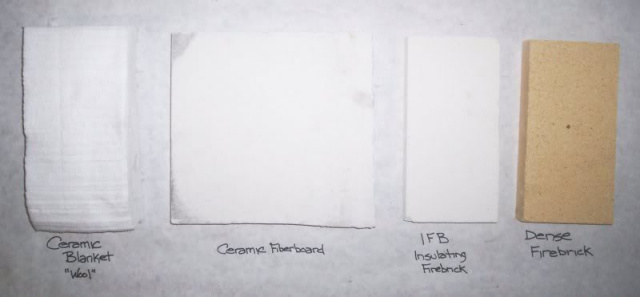The Straight Facts Concerning Refractories
In order to set the record straight, I have created a new webpage to deal with the facts regarding the thermal properties and performance of Ceramic Fiberboard, Ceramic Blanket, Lightweight Insulating Firebrick, and Standard Dense Ceramic Firebrick(the stuff Steel Mills line their furnaces with).
Ceramic Blanket, Ceramic Fiberboard and Lightweight Insulating Firebrick are classified as Insulation, while Dense Ceramic Firebrick is NOT.
The insulating refractories have Low Thermal Conductivity, which means heat does not readily pass through them. The heat is reflected back into the chamber instead, creating a super efficient firebox.
Dense Ceramic Firebrick on the other hand, has a High Thermal Conductivity, which means heat readily passes through it, instead of "insulating" the chamber, it act as a heat sink, absorbing heat and radiating it off through the shell. Dense Ceramic Firebrick, by it's very nature, ROBS a Forge of valuable heat. It's cheap and a very poor choice as a liner material for walls and ceilings.
Dense Firebrick is also not designed to handle the extreme Thermal Shock it must endure in a gas forge. In the large furnaces it was designed to be used in, the brick comes up to temperature slowly, and is cooled slowly. In a gas forge, the heating and cooling cycles are extreme and fast, the constant thermal shock is much more than the Dense Firebrick was designed to endure. The Ceramic Blanket, Board and Insulating Firebrick were developed to withstand much greater Thermal Shock, they are the only reasonable choice as an insulating material for these applications.
See the chart below for an illustration of these materials thermal properties...
www.nrel.gov/docs/fy00osti/27556.pdf

Another very informative piece can be found at: www.osti.gov/energycitations/purl.cover.jsp
In reference to any claims of "steel mill furnace liner" AKA Dense Firebricks superior performance, let's see what one of the Manufacturers has to say. This is the manufactrers own data on Lightweight IFB and how it compares to their Dense products...
From:
http://www.thermalceramics.com/about/feature.asp?messageid=15
High Temperature IFB Grades JM™-26, JM-28, and JM-30
These bricks are manufactured with a unique process that does not incorporate any low temperature binders. Their bond is a ceramic bond that is formed by high temperature firing that produces brick that are very stable and strong at temperatures above 2600F. Features include:
· Rated for use to 2600F, 2800F, and 3000F (1430C, 1540C, and 1650C)
· Low densities ranging from 50 to 80 lb/ft^3 (800 to 1200 kg/m^3)
· Excellent thermal conductivity making them four to eight times more thermally efficient than similar temperature-rated dense castables and firebrick
· Excellent strength-to-weight characteristics
· Good thermal shock resistance
These are the Refractory Types being referred to in the chart above. Please note the appearence of each type, so certian unethical sellers can not claim that they are now using "insulating firebrick" instead of "steel mill furnace liner"...

